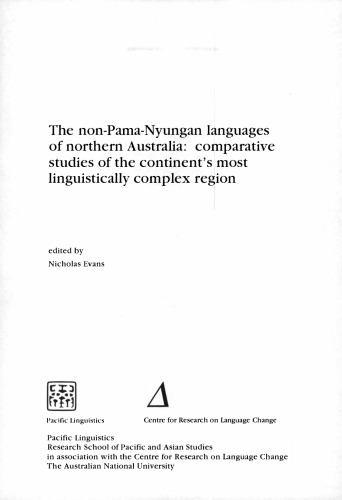

Most ebook files are in PDF format, so you can easily read them using various software such as Foxit Reader or directly on the Google Chrome browser.
Some ebook files are released by publishers in other formats such as .awz, .mobi, .epub, .fb2, etc. You may need to install specific software to read these formats on mobile/PC, such as Calibre.
Please read the tutorial at this link: https://ebookbell.com/faq
We offer FREE conversion to the popular formats you request; however, this may take some time. Therefore, right after payment, please email us, and we will try to provide the service as quickly as possible.
For some exceptional file formats or broken links (if any), please refrain from opening any disputes. Instead, email us first, and we will try to assist within a maximum of 6 hours.
EbookBell Team

4.0
46 reviews
The introduction covers the main issues in comparative non-Pama-Nyungan studies, and forms a state-of-the-art survey of the classification of non-Pama-Nyungan languages, which have undergone substantial changes over recent decades. It also consider the main issues in their subgrouping, and their relation to the Pama-Nyungan languages. The second to fourth sections then looks at issues of subgrouping, reconstruction and areal influence that pertain to particular non-Pama-Nyungan families or subregions. The final sections returns to the issue of whether one can carry the process of reconstruction back to deeper levels than the families themselves, that is back to some level from which all or most non-Pama-Nyungan families are descended.
Overall, the volume illustrates that - despite recent claims by some authors - the comparative method can be successfully applied to Australian languages. It also furnishes a number of detailed and intricate studies of morphological reconstruction applied to complex paradigms.